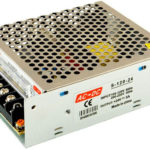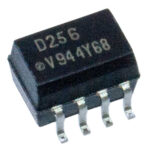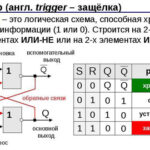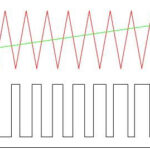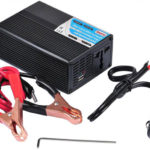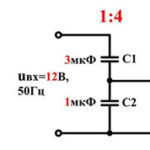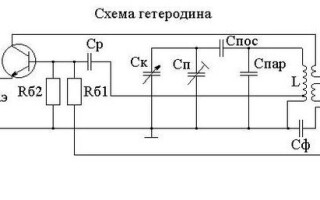local oscillator (master oscillator) in the receiver (transmitter) in most cases is called a signal generator, which determines the frequency of reception. Although its role is called auxiliary, it has a very significant impact on the quality of the receiving or transmitting device.
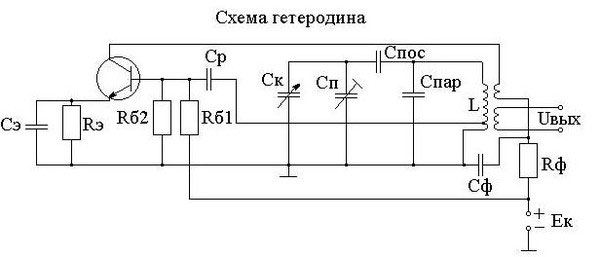
Content
The purpose of the local oscillator and the principle of heterodyne reception
At the dawn of radio reception, when building receiver circuits, they dispensed with local oscillators. The signal selected by the input oscillatory circuit was amplified, and then it was detected and fed to a low-frequency amplifier. With the development of circuitry, the problem of building a radio frequency amplifier with a large gain has arisen.
To cover a large range, it was performed with a wide bandwidth, which made it prone to self-excitation. Switched amplifiers turned out to be too complex and cumbersome.
Everything changed with the invention of heterodyne reception.The signal from the tunable (or fixed) oscillator is fed to the mixer. The received signal is fed to the other input of the mixer, and the output is a huge number of combination frequencies, which are the sums and differences of the frequencies of the local oscillator and the received signal in various combinations. Practical applications usually have two frequencies:
- fheterodyne-fsignal;
- f signal - f heterodyne.
These frequencies are called mirror frequencies with respect to each other. Reception is carried out on one channel, the second is filtered out by the input circuits of the receiver. The difference is called the intermediate frequency (IF), its value is chosen when designing the receiving or transmitting device. The remaining combination frequencies are filtered out by an intermediate frequency filter.
For industrial equipment, there are standards for choosing the IF value. In amateur equipment, this frequency is selected from various conditions, including the availability of components for building a narrow-band filter.
The intermediate frequency selected by the filter is amplified in the IF amplifier. Since this frequency is fixed, and the bandwidth is small (2.5 ... 3 kHz is enough to transmit voice information), the amplifier for it can easily be made narrow-band with a high gain.
There are circuits where the total frequency is used - f signal + f heterodyne. Such schemes are referred to as "upward transformation" schemes. This principle simplifies the construction of the input circuits of the receiver.
There is also a direct conversion technique (not to be confused with direct amplification!), In which reception is carried out almost at the local oscillator frequency.Such circuitry is characterized by simplicity of design and adjustment, but direct conversion equipment has inherent flaws that significantly degrade the quality of work.
The transmitter also uses local oscillators. They perform the opposite function - they transfer the low-frequency modulated signal to the transmit frequency. In communication equipment, there may be several local oscillators. So, if a circuit with two or more frequency conversions is used, it uses, respectively, two or more local oscillators. Also, the circuit may contain local oscillators that perform additional functions - the restoration of a carrier suppressed during transmission, the formation of telegraph parcels, etc.
The power of the local oscillator in the receiver is small. A few milliwatts in most cases is enough for any task. But the local oscillator signal, if the receiver circuitry allows it, can leak into the antenna, and it can be received at a distance of several meters.
There is a legend among radio amateurs that during the time of the ban on listening to Western radio stations, representatives of the special services walked along the entrances of houses with receivers tuned to the frequencies of “enemy voices” (adjusted for an intermediate frequency). By the presence of signals, it was allegedly possible to determine who was listening to prohibited broadcasts.
Requirements for the parameters of the local oscillator
The main requirement for a local oscillator signal is spectral purity. If the local oscillator generates a voltage other than a sinusoid, then additional combination frequencies appear in the mixer.If they fall into the transparency band of the input filters, this leads to additional reception channels, as well as to the appearance of "struck points" - at some reception frequencies, a whistle occurs that interferes with receiving a useful signal.
Another requirement is the stability of the output signal level and its frequency. The second is especially important when processing signals with a suppressed carrier (SSB (OBP), DSB (DBP), etc.) It is not difficult to obtain the invariability of the output level by using voltage stabilizers to power the master oscillators and choosing the correct mode of the active element (transistor).
The constancy of the frequency depends on the stability of the driving frequency elements (capacitance and inductance of the oscillatory circuit), as well as on the invariance of the mounting capacitance. The instability of LC elements is determined, for the most part, by the temperature changing during operation of the local oscillator. To stabilize the components of the circuit, they are placed in thermostats, and special measures are also used to compensate for temperature deviations in capacitance and inductance values. Inductors usually try to make completely thermally stable.
For this, special designs are used - the coils are wound with a strong wire tension, the turns are filled with a compound to prevent shifting of the turns, the wire is burned into a ceramic frame, etc.
To reduce the effect of temperature on the capacitance of the driving capacitor, it is made up of two or more elements, selecting them with different values and signs of the temperature coefficient of capacitance so that they are mutually compensated during heating or cooling.
Due to problems with thermal stability, electronically controlled local oscillators, where varicaps are used as a capacitance, are not widely used. Their dependence on heating is non-linear, and it is very difficult to compensate for it. Therefore, varicaps are used only as detuning elements.
Mounting capacitance adds up to the capacitance of the driving capacitor, and its instability also leads to frequency drift. To avoid mounting instability, all elements of the local oscillator must be mounted very rigidly to avoid even minimal shifts relative to each other.
A real breakthrough in the construction of master oscillators was the development in the 30s of the last century of powder casting technology in Germany. This made it possible to produce complex three-dimensional shapes for radio equipment assemblies, which made it possible to achieve mounting rigidity unprecedented at that time. This made it possible to bring the reliability of Wehrmacht radio communication systems to a new level.
If the local oscillator is non-tunable, the frequency-setting element is usually quartz resonator. This makes it possible to obtain extremely high generation stability.
In recent years, there has been a transition trend in the use of digital frequency synthesizers as local oscillators instead of LC oscillators. The stability of the output voltage and frequency in them is easily achieved, but the spectral purity leaves much to be desired, especially if the signal is generated using inexpensive microcircuits.
Today, old radio reception technologies are being replaced by new ones, such as DDC - direct digitization.The time is not far off when local oscillators in receiving equipment will disappear as a class. But this will not come so soon, so knowledge about heterodynes and the principles of heterodyne reception will be in demand for a long time to come.
Similar articles:
